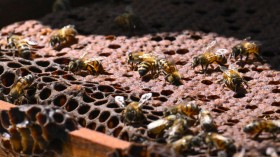Besides the direct transformation of sunlight into electricity, solar energy can also be used to drive reactions to create chemical fuels, such as hydrogen, which can be used for transportation. Typically, the cost of producing sun-capturing semiconductors and catalysts, which are used to make the fuel, is prohibitively expensive.
However, in a new study, researchers from University of Wisconsin Madison were able to drastically cut the cost of producing alternative fuels from the Sun.
"In order to make commercially viable devices for solar fuel production, the material and the processing costs should be reduced significantly while achieving a high solar-to-fuel conversion efficiency," said Kyoung-Shin Choi, a chemistry professor at the University of Wisconsin-Madison.
In the study, published in Science, Choi combined cheap, oxide-based materials to split water into hydrogen and oxygen gases using solar energy. Her team converted the energy with an efficiency of 1.7 percent, which is the highest reported for any oxide-based photoeclectrode system.
Choi created solar cells with an incredible surface area of "32 square meters for each gram," according to the press release. She used electrodeposition, which is also used to apply the gold plating to jewelry, to create the cells from bismuth vanadate.
"Without fancy equipment, high temperature or high pressure, we made a nanoporous semiconductor of very tiny particles that have a high surface area," said Choi. "More surface area means more contact area with water, and, therefore, more efficient water splitting."
The team used paired catalysts to help speed the reaction with bismuth vanadate that produces the fuel.
Choi's work was unique in its focus on the semiconductor-catalyst junction.
"The problem is, in the end you have to put them together," she said. "Even if you have the best semiconductor in the world and the best catalyst in the world, their overall efficiency can be limited by the semiconductor-catalyst interface."
Choi and her colleague used cheap and somewhat flawed catalysts, iron oxide and nickel oxide, by stacking them on the bismuth to take advantage of their relative strengths.
"Since no one catalyst can make a good interface with both the semiconductor and the water that is our reactant, we choose to split that work into two parts," Choi said. "The iron oxide makes a good junction with bismuth vanadate, and the nickel oxide makes a good catalytic interface with water. So we use them together."
Choi expects her work to provide the efficiency enhancements needed in nanoporous bismuth vanadate electrodes and dual catalyst layers used in labs to further the use of solar as a renewable source of energy.
© 2024 NatureWorldNews.com All rights reserved. Do not reproduce without permission.





